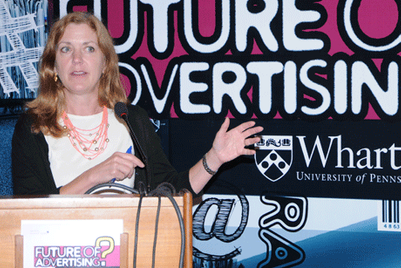
The Wharton School of the University of Pennsylvania embarked on its “Future of Advertising” project in 2008, and it travels to India next week, and China thereafter, to explore trends in emerging markets. The Indian leg of the conference is scheduled for 20 July, 2011 in New Delhi, and is supported by Yahoo!. Vaasu Gavarasana of Yahoo! APAC will be the Chair for the conference in the capital city. The attendees at the round table discussion will include ad agencies, media agencies, digital agencies and marketers.
An initiative led by Professor Jerry Wind, Lauder professor and director, SEI Center for Advanced Studies in Management at The Wharton Business School, “Future of Advertising” aims to trace the evolutionary path of advertising that is emerging from the interplay between old media and emerging new media channels and a world in which consumers are the driving force. Drawing upon a set of innovative experiments organized by the Wharton Schools’s SEI Center for Advanced Studies in Management and the insights of key stakeholders and experts from around the world, the project hopes to provide fresh insights and new rules for the future of advertising.
The project has already covered two continents: North America and Europe.
“It is a privilege to be associated with Wharton School’s project on advertising as it will enhance knowledge horizon and deepen the learning curve for all budding advertising professionals. The aim is to transcend the traditional methods of advertising and further promote broader and radical transformation in this field. The focus of the venture would also revolve on impressing the criticality of a two-way communication with the customers for a brand to be successful,” said Gavarasana. “It will be a great platform to assimilate and exchange knowledge and learning’s between the Asian Group and the Wharton team”, he further added.
Wind said, “The idea is to understand the similarities and differences between the developed and emerging markets in terms of advertising trends and consumer consumption. The Asian countries, particularly India, are currently a melting pot of all economic, social, political and cultural changes and is at the threshold of complex transformation. As new media of communication explodes and internet penetration increases across the globe, technological platforms will breed similarities and highlight differences, which will result in different behavioral patterns and thereby demand for fresh and innovative marketing policies to ensure greater consumer consumption across industries.”



.jpg&h=334&w=500&q=100&v=20250320&c=1)


.jpg&h=334&w=500&q=100&v=20250320&c=1)



.jpg&h=334&w=500&q=100&v=20250320&c=1)






.jpg&h=268&w=401&q=100&v=20250320&c=1)
.jpg&h=268&w=401&q=100&v=20250320&c=1)

